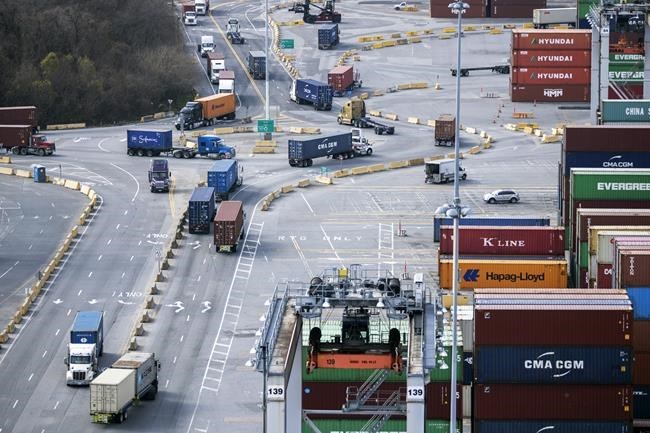WASHINGTON (AP) — Prices at the wholesale level fell from June to July, the first month-to-month drop in more than two years and a sign that some of the U.S. economy's cooled last month.
Thursday’s report from the Labor Department showed that the producer price index — which measures inflation before it reaches consumers — declined 0.5% in July. It was the first monthly drop since April 2020 and was down from a sharp 1% increase from May to June.
The easing of wholesale inflation suggests that consumers could get some relief from relentless inflation in the coming months. The wholesale report follows government data Wednesday that showed that — the first flat figure after 25 straight months of increases.
Yet economists caution that it's still too early to say that inflation is headed steadily lower.
“The July deceleration ... is a move in the right direction,” said Rubeela Farooqi, chief U.S. economist at High Frequency Economics. “But producer costs continue to rise at a rapid pace, well above target."
Wholesale food prices rose 1% from June to July, a sign that grocery prices will likely keep rising in the coming months. The wholesale costs of eggs, beef and vegetables all jumped.
Trucking freight costs, though, fell 0.3%, evidence that some supply chain snarls are easing.
Inflation at the wholesale level still jumped 9.8% in July compared with a year earlier, suggesting that inflation will remain at painful levels for months to come. That was down from a year-over-year surge of 11.3% in June — near a four-decade high — and was the smallest annual rise in eight months.
Thursday's report showed that wholesale gas prices tumbled 16.7% from June to July, a sign that retail prices at the pump will continue to decline this month and likely into September. Consumers are already seeing steady reductions: Gas prices fell below $4 a gallon, on average, on Thursday for .
The milder inflation data, and last month's , have provided President Joe Biden with some positive economic news after months of accelerating price spikes . Congressional Republicans have made rising inflation a major line of attack in the upcoming midterm elections.
And the Federal Reserve has embarked on its since the early 1980s in an effort to quell inflation, and will likely keep raising borrowing costs for the rest of this year. Its short-term rate is currently in a range of 2.25% to 2.5%, the highest since 2018.
Chair Jerome Powell has said the Fed would need to see a series of declining inflation readings before it would consider pausing its rate increases. The Fed could announce a third straight three-quarter point rate hike when it next meets in late September or instead carry out a less drastic half-point hike.
Thursday's producer price data captures inflation at an earlier stage of production and can sometimes signal where consumer prices are headed. It also feeds into the Fed’s preferred measure of inflation, which is called the personal consumption expenditures price index.
Christopher Rugaber, The Associated Press



